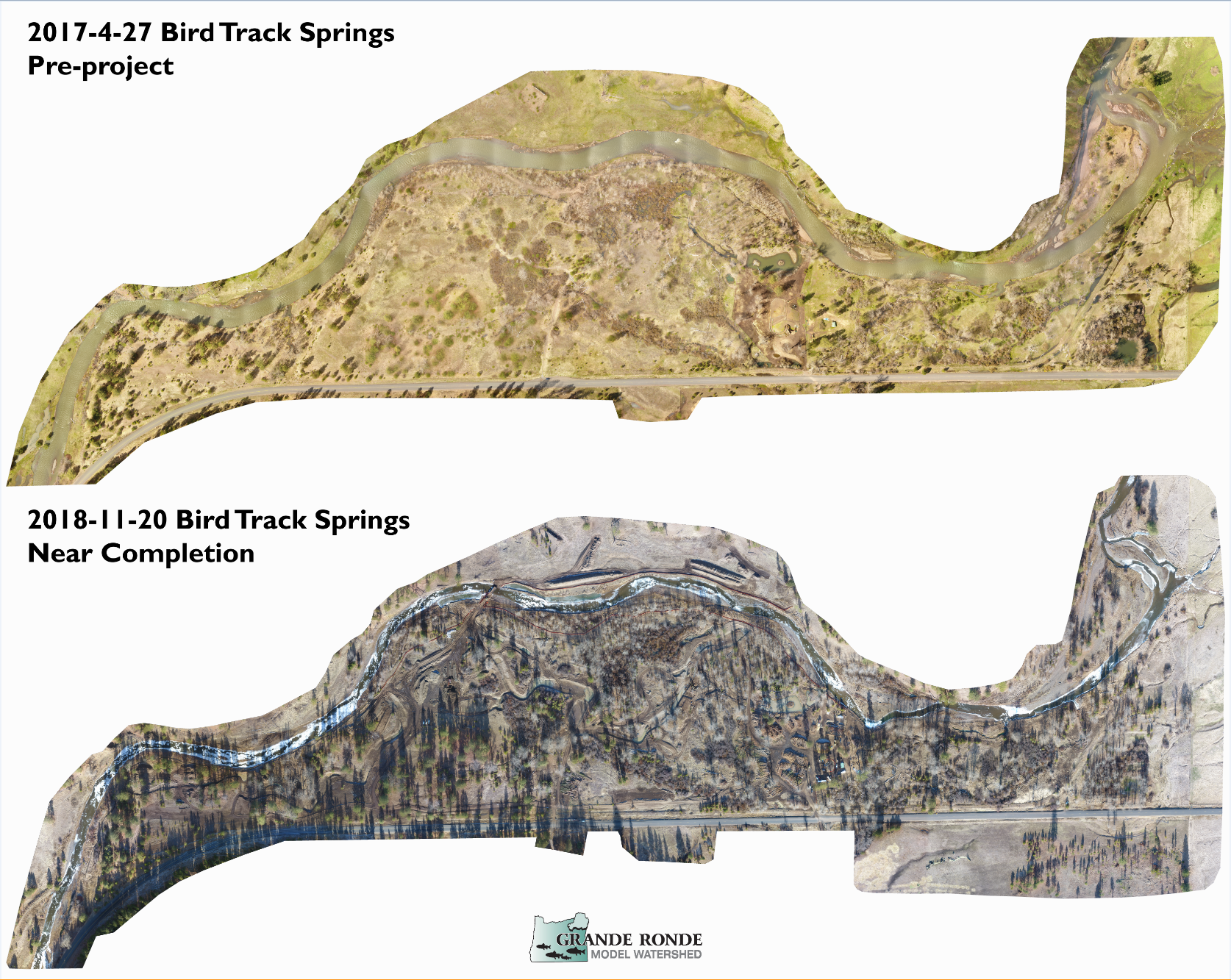Bird Track Springs Fish Habitat Restoration
The Bird Track Springs Fish Habitat Enhancement Project is located in the Upper Grande Ronde Subbasin along the mainstem Grande Ronde River between RM 144.7 and 146.1 The Project reach sits at an elevation of approximately 3,100 feet with a contributing watershed area of 475 square miles. The watershed is predominantly snowmelt-driven. Most of the basin is forested (over 73 percent) and has very little development (less than 0.1 percent estimated impervious area) (USGS 2014). The Project reach includes Wallowa-Whitman National Forest and private lands along State Highway 244 within the Grande Ronde recovery plan assessment units UGC3A and UGS16. The Upper Grande Ronde River Tributary Assessment (Appendix A; Reclamation 2014) identifies the Project reach as an unconfined geomorphic reach with a high potential to improve the overall physical and ecological processes that support salmonids in the basin. Severe habitat, floodplain, and channel degradation has occurred as a result of anthropogenic alteration, including beaver trapping, historic splash dam logging ,railroads, road construction, channelization, diking and leeves, and livestock overgrazing. Loss of floodplain forests, wetlands, and natural and complex stream channel networks has promoted plane bed channel morphology which is over-widened and shallow, subject to anchor ice formation, and disconnected from an extensive historic floodplain and channel networik. The project reach exhibits poor habitat quality with elevated stream temperature, lack of large pool habitat, absence of complexity, and limited ability to function properly and provide habitat suitable to support imperiled fishery resources. In the current condition, the middle reaches of the Upper Grande Ronde and incapable to supporting the CTUIR's First Foods policy, exhibits an extreme departure from the CTUIR's River Vision and is not supporting Treaty-Reserved natural resources. Existing riparian vegetation conditions include scattered patches of woody shrubs and deciduous and conifer forest, and large areas of herbaceous vegetation with shallow rooting depths where the floodplain has been cleared and drained for ranching. Beavers are uncommon and no longer play a major role in wood delivery to the channel or maintaining diverse off-channel habitats and riparian and wetland conditions. The long-term rehabilitation vision (CTUIR’s River Vision) for the Bird Track Springs Fish Habitat Enhancement Project is to improve physical and ecological processes by rehabilitating and restoring the project area to achieve immediate and long-term benefits to chinook, steelhead, and bull trout at all life stages.









